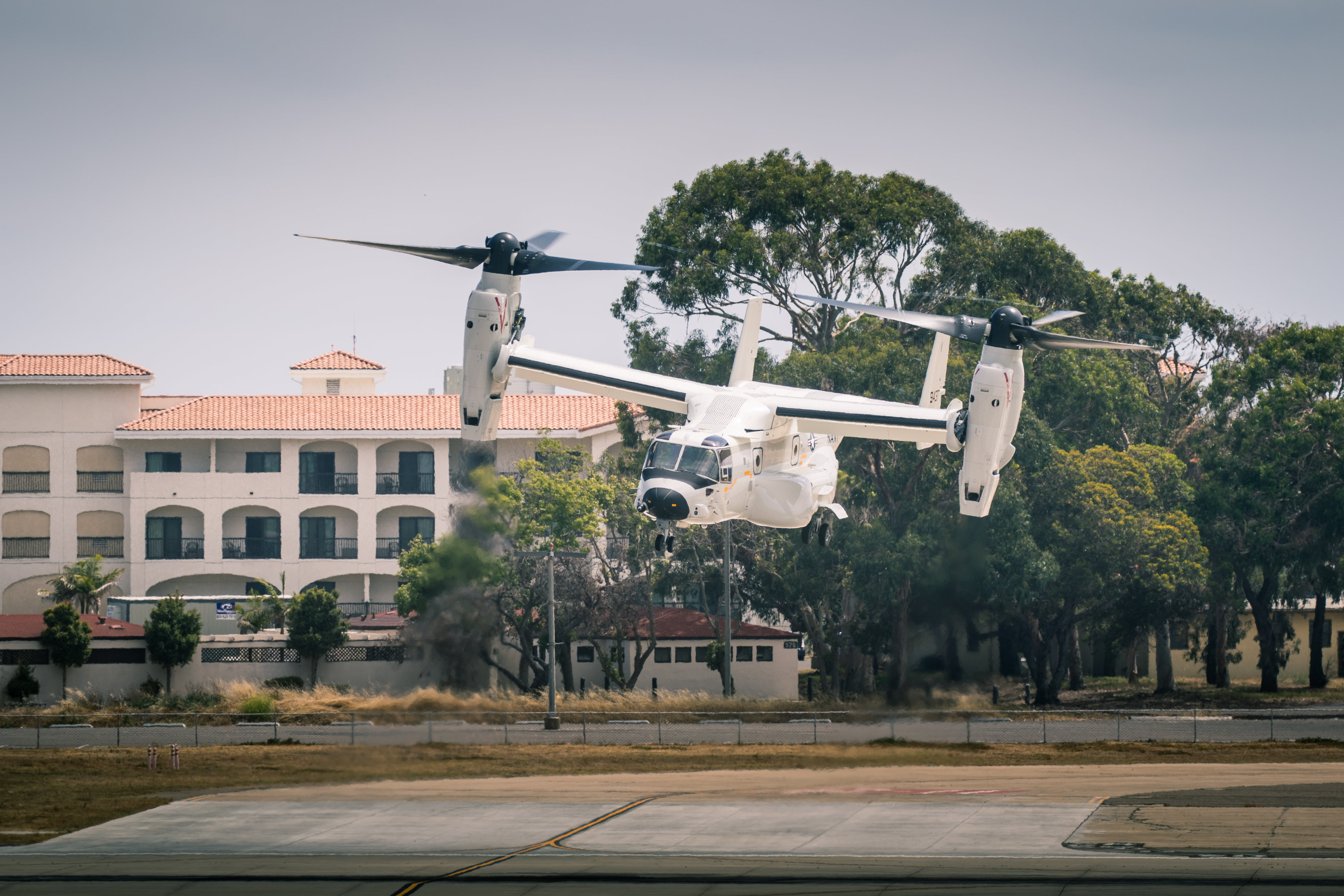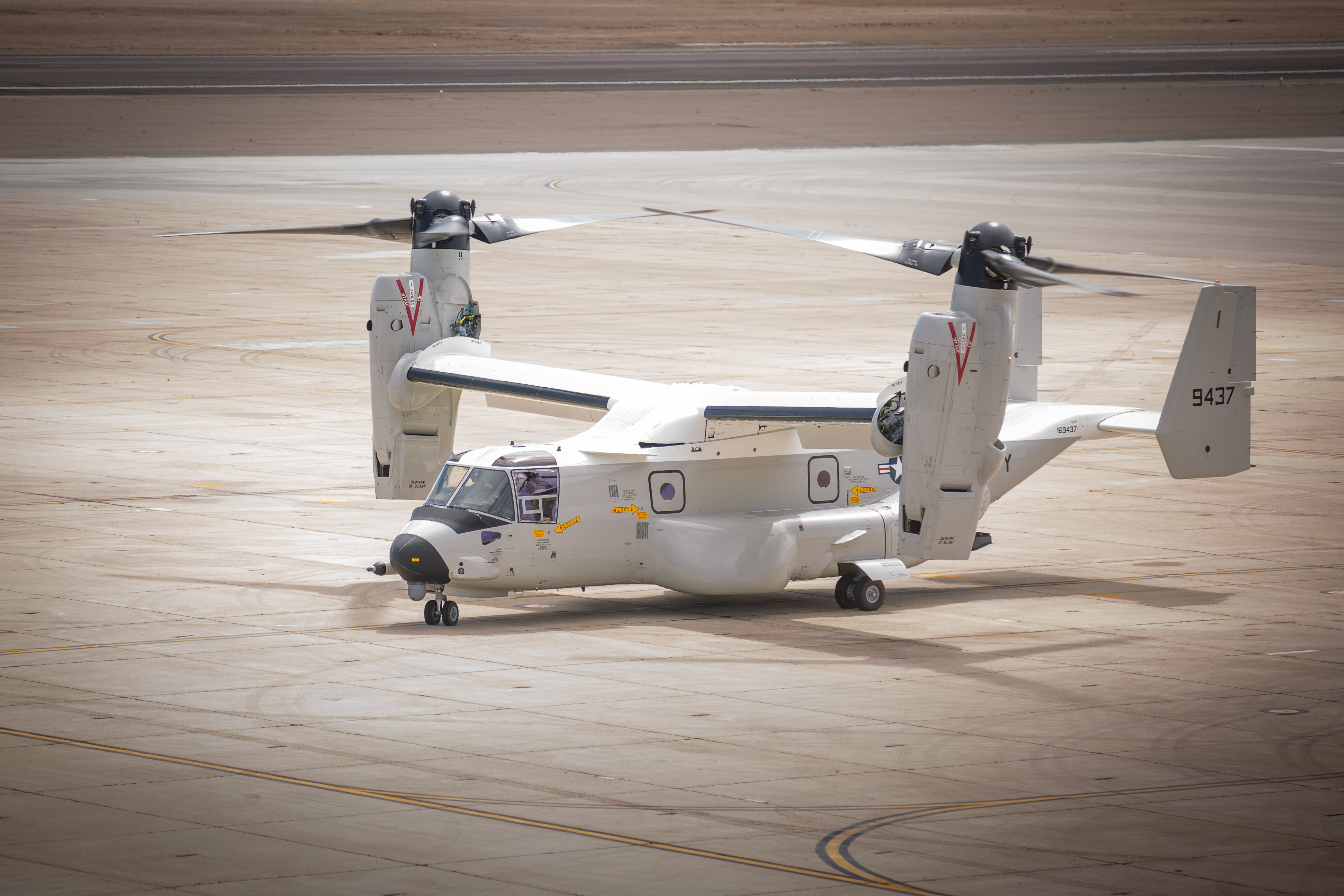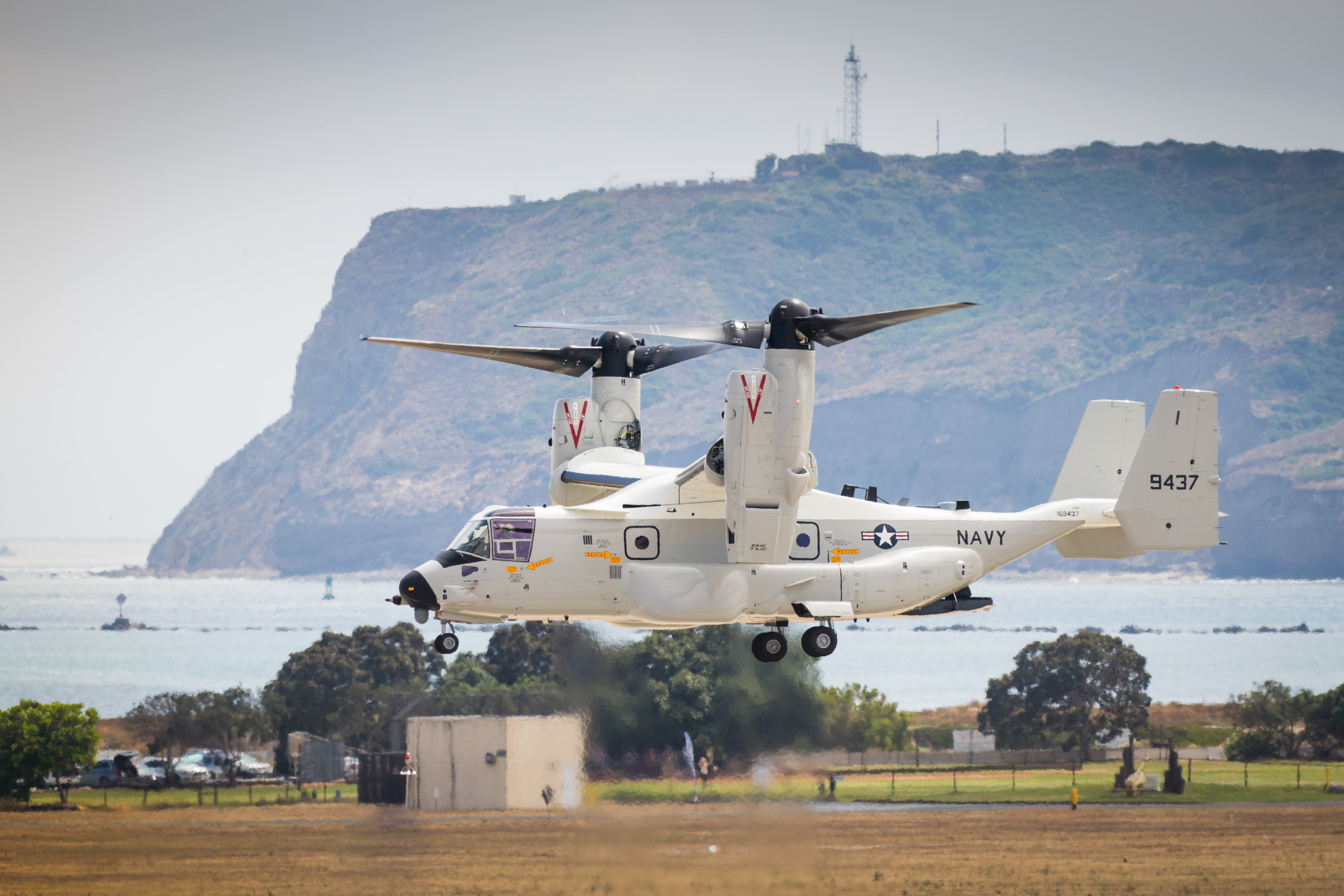By Robbin Laird
The first CMV-22B Osprey has arrived in San Diego at Naval Air Station North Island and is assigned to the “Titans” of Navy’s Fleet Logistics Multi-Mission Squadron (VRM) 30.
The squadron was stood up in 2018 to operate the CMV-22B as a replacement for the Navy’s legacy C-2A Greyhound carrier onboard delivery (COD) aircraft.
I visited Amarillo Texas in February when the US Navy unveiled one of its first CMV-22Bs.
At that ceremony, Captain Dewon Chaney, Commodore of the Fleet Logistics Multi-Mission Wing highlighted the coming of the new capability and what it meant for the US Navy.
What is the status of the CODs?
Every Carrier Air Wing Commander and Carrier CO has received that question numerous times from the Carrier Strike Group Commander while on deployment. And for good reason…
The COD, or Carrier On-board Delivery, aircraft is the only long-range aerial logistics platform providing logistical support for the Carrier Strike Group, ensuring its time sensitive combat capability.
Sure, there are ways to get some items to the carrier but that time lag in most cases is at the cost of readiness for the warfare commander.
The Navy saw the need to replace the aircraft providing this critical capability years ago and embarked on multiple efforts to inform that decision. The Navy selected V-22 as the future COD platform.
The first aircraft is being delivered today (well actually a week ago but who is counting). And our first deployment will be here in a blink of an eye!
But the devil in the details with this particularly accelerated program is making sure that the fleet can man, train, and equip those at the tip of the spear potentially in harm’s way.
As of October, last year as the Wing Commodore, I have the honor, privilege and responsibility, given to me by Vice Admiral Miller, to be the lead for the Navy’s CMV-22 community along with our partners at well into the 2040s. Delivery of this aircraft is a major milestone on the path to initial operational capability in 2021.
The CMV-22 has the capability to internally carry the F-35C engine power module. This capability is a game changer for the Air Wing of the Future and drove the need to match up the F-35C and CMV-22 operational deployments.
The first CMV-22 deployment is now less than a year from initial delivery of N3, which is scheduled for late June of this year.
Its success is key to maintaining combat lethality for the Air Wing of the future and our Navy,,,, CMV-22s will operate from all aircraft carriers providing a significant range increase for operations from the Sea Bases enabling Combatant Commanders to exercise increased flexibility and options for warfare dominance. If you’re in a fight.. .it’s always good to have options!
Every month following the first initial deployment, there will be a CMV-22 detachment operating with a US aircraft carrier somewhere in the world….
From another perspective, the CMV-22B is entering the US Navy as the entire fleet is going through a kill web transition.
I had discussed this transition with the US Navy Air Boss in San Diego a week before “Chainsaw” Chaney made his remarks in Amarillo, Texas.
VADM Miller discussed with me how he one might consider the change underway for the carrier Air Wing.
What is underway is a shift from integrating the air wing around relatively modest and sequential modernization efforts for the core platforms to a robust transformation process in which new assets enter the force and create a swirl of transformation opportunities, challenges, and pressures.
How might we take this new asset and expand the reach and effectiveness of the carrier strike group?
How might it empower maritime, air, and ground forces as we shape a more effective (i.e. a more integratable) force?
During a recent visit to San Diego, I had a chance to discuss such an evolving perspective with the Navy’s Air Boss, Vice Admiral “Bullet” Miller.
We started by discussing the F-35 which for him is a major forcing function change in the CVW.
But his focus is clearly upon not simply introducing the aircraft into the force but ensuring that it is part of the launch of a transformative process for shaping the evolving air wing….
The Air Boss is looking to focus his attention on enhanced combat lethality which the fleet can deliver to the maritime services and the joint force.
What is being set in motion is a new approach where each new platform which comes into the force might be considered at the center of a cluster of changes.
The change is not just about integrating a new platform in the flight ops of the carrier.
The change is also about how the new platform affects what one can do with adjacent assets in the CSG or how to integrate with adjacent U.S. or allied combat platforms, forces, and capabilities.
To give an example, the U.S. Navy is replacing the C-2 with the CMV-22 in the resupply role.
But the Navy would be foolish to simply think in terms of strictly C-2 replacement lines and missions.
So how should the Navy operate, modernize, and leverage its Ospreys?
For Miller, the initial task is to get the Osprey onboard the carrier and integrated with CVW operations.
But while doing so, it is important to focus on how the Osprey working within the CVW can provide a more integrated force.
Vice Admiral Miller and his team are looking for the first five-year period in operating the CMV-22 for the Navy to think through the role of the Osprey as a transformative force, rather than simply being a new asset onboard a carrier.
Hence, one can look at the CMV-22 innovation cluster in the following manner:
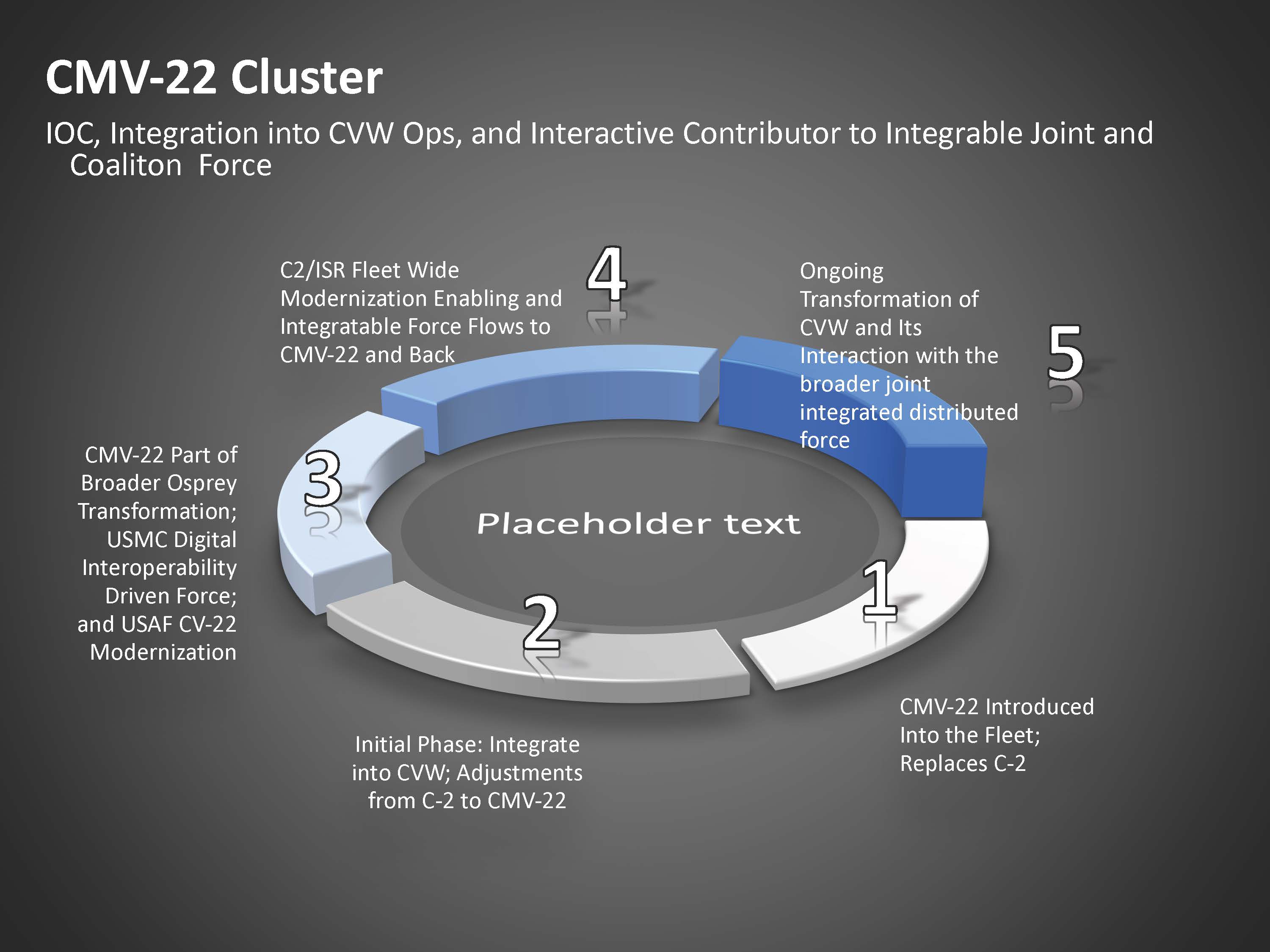
Such an approach is embedded in the rethink from operating and training an integrated air wing to an integratable air wing.
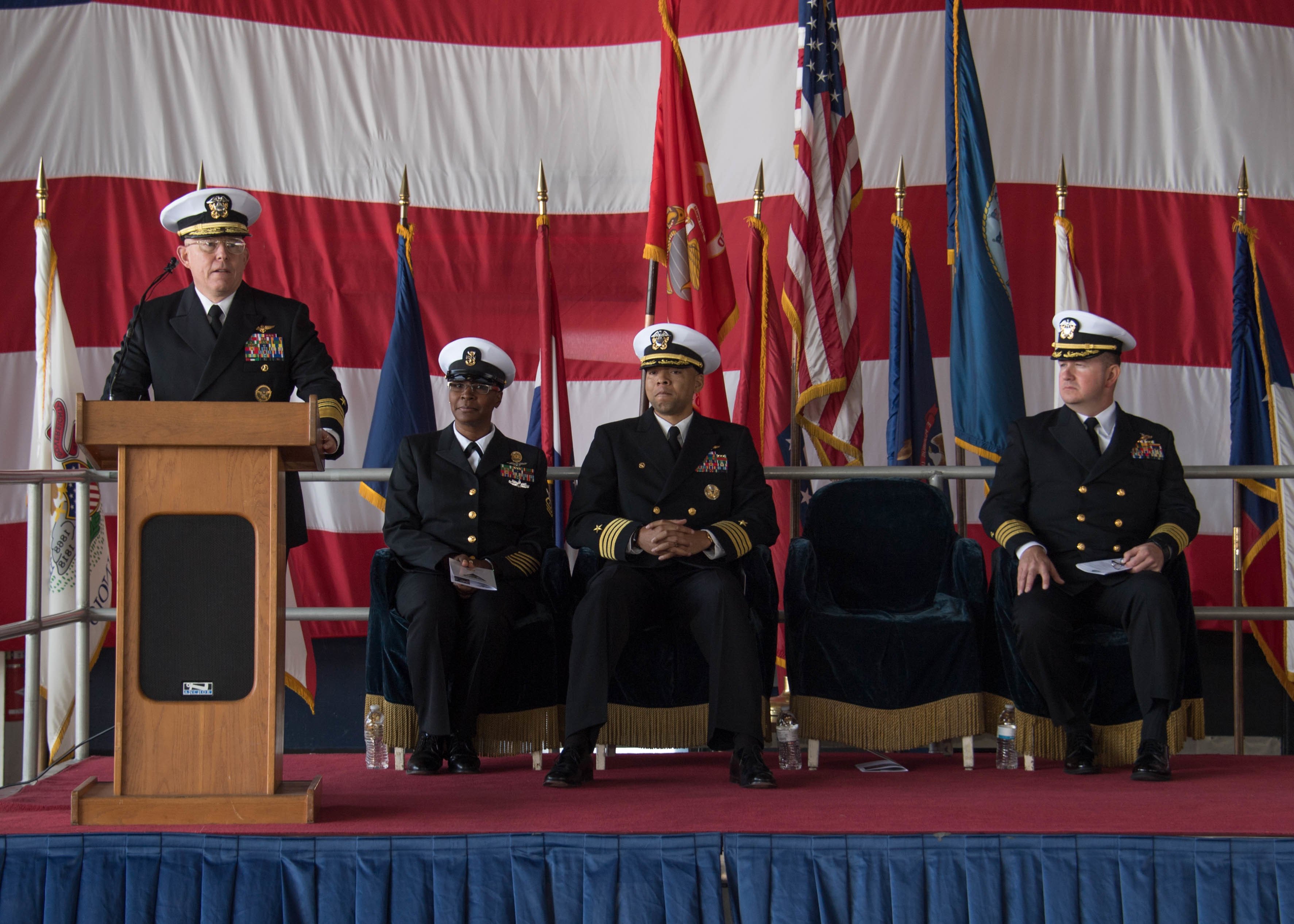
SAN DIEGO (Oct. 10, 2019) Vice Adm. DeWolfe H. Miller III, Commander, Naval Air Forces, speaks at the Fleet Logistics Multi-Mission Wing (COMVRMWING) 1 establishing ceremony on board Naval Air Station North Island (NASNI) Oct. 10. The Navy established its first CMV-22B Osprey squadron (VRM-30) Dec. 14, 2018 at NASNI. The Navy’s transition from the C-2A Greyhound to the CMV-22B Osprey is expected complete by 2028. U.S. Navy Photo by Mass Communication Specialist 2nd Class Chelsea D. Meiller
Captain Dewon Chaney, United States Navy, Commodore, Fleet Logistics Multi-Mission Wing
Captain Chaney was born and raised in Atlanta, Georgia. Following high school, he enlisted in the Navy in 1993 and was selected to attend the Broadened Opportunity for Officer Selection and Training (BOOST) program following basic training. He earned an undergraduate degree in Mathematics from Morehouse College and commissioned via the NROTC program in the summer of 1998.
Captain Chaney was designated a Naval Aviator in July 2000 and then reported to HC-3 in San Diego for H-46 fleet replacement training after completing a brief H-60 qualification at HSL-40 in Mayport, FL. Captain Chaney’s operational assignments include his junior officer tour with the “Providers” of HC-5 in Yigo, Guam where he deployed on the USNS San Jose (AFS 7), USNS Kiska (AE 35), and twice onboard USS Essex (LHD 2). CAPT Chaney served aboard USS Dwight D. Eisenhower (CVN 69) as the V-2 Waist Catapult Branch Officer and V-1 Flight Deck Officer. His department head tour was with the “Island Knights” of HSC-25 where he deployed to Basrah, Iraq. He commanded the “Wildcards” of HSC-23 and the “Merlins” of HSC-3.
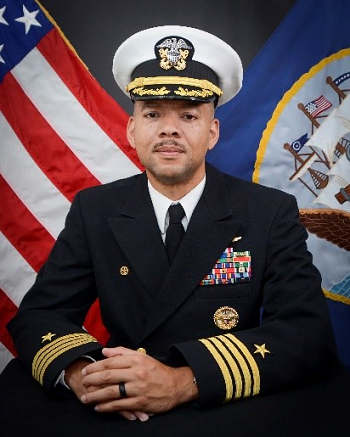
Shore and staff assignments include Flag Aide to the 53rd Chief of Naval Personnel, a tour at the Navy Personnel Command in Millington, Tennessee as the Helicopter Sea Assignments Officer, and a Pentagon tour as Military Assistant to the Assistant Secretary of Defense for International Security Affairs within the Office of the Secretary of Defense for Policy. In October 2019, Captain Chaney reported for duty as Commander, Fleet Logistics Multi-Mission Wing.
Captain Chaney attended the United States Naval War College in Newport, Rhode Island, completing his Phase I Joint Professional Military Education, and earning a Master’s degree in National Security and strategic Studies.
He has accumulated over 2,000 flight hours in various aircraft to include the H-46, H-60, and MV-22. His personal awards include the Defense Meritorious Service, Medal Meritorious Service Medal (2), Strike/Flight Air Medal, the Navy and Marine Corps Commendation Medal (4), the Army Commendation Medal, and Navy and Marine Corps Achievement Medal and several unit, campaign and service awards.
FLEET LOGISTICS MULTI-MISSION SQUADRON THREE ZERO (VRM-30) is the U. S. Navy’s first CMV-22B squadron.
Based at NAS North Island, San Diego, CA, the “Titans” of VRM-30 were established to begin the Navy’s transition from the C-2A Greyhound, which has provided logistics support to aircraft carriers for four decades, to the CMV-22B.
The CMV-22B is the Navy version of the V-22 Osprey, a multi-engine, dual-piloted, self-deployable, medium lift, vertical takeoff and landing (VTOL) tilt-rotor aircraft, which has an increased operational range, faster cargo loading/unloading, increased survivability and enhanced beyond-line-of-sight communications compared to the C-2A.
For our look at the coming of the CMV-22B, see the following:


